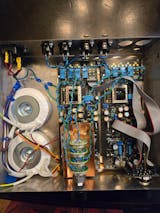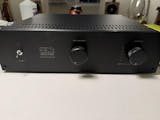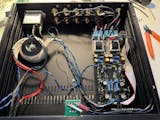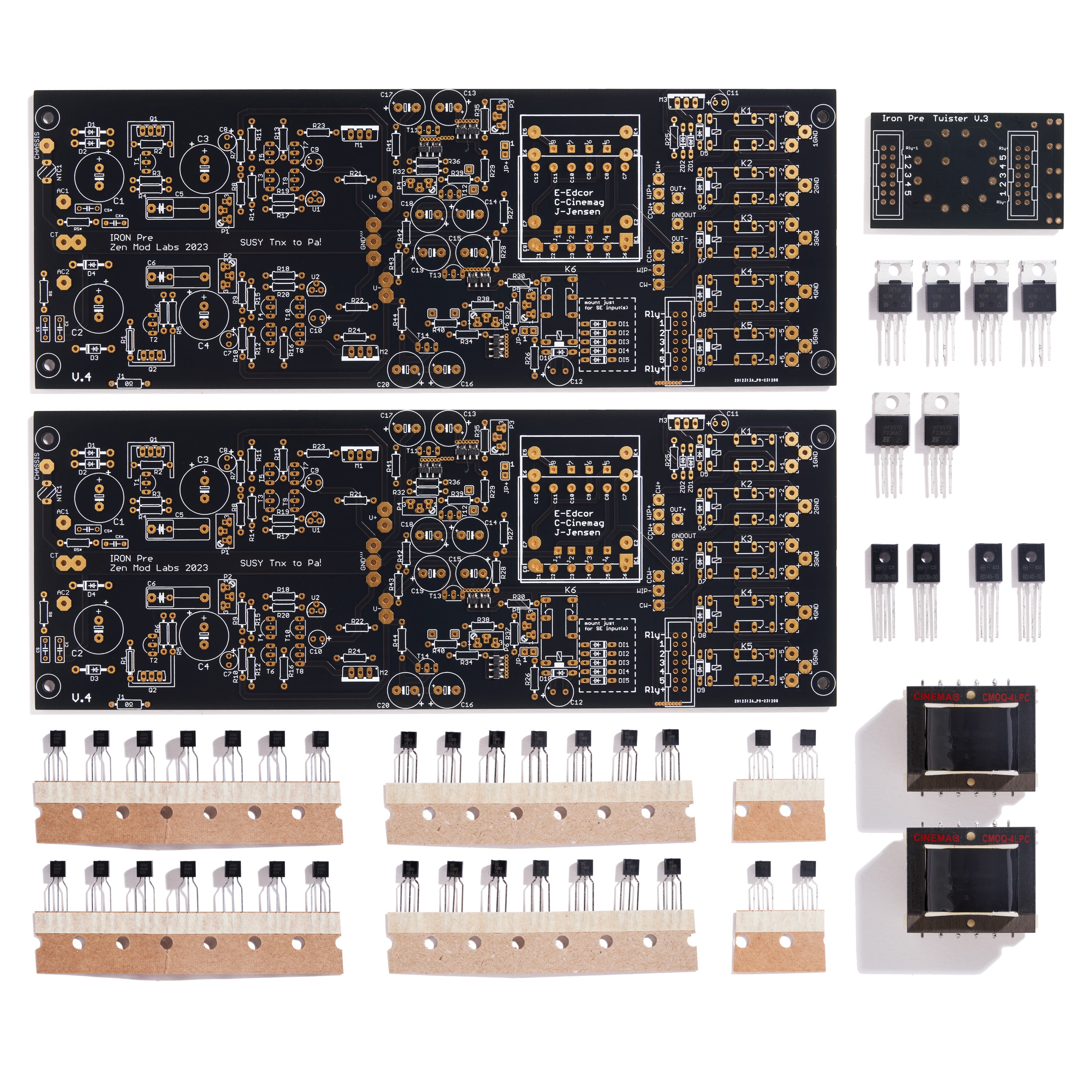
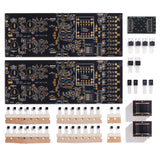
Iron Pre SMD Balanced Essentials Kit
- Description
- Project Info
- Links
What's in the kit?
- PCB for for two channels with 8 matched Toshiba JFETs installed per channel.
- “Twister Board” PCB – Input Selection with LEDs and Mute
- All the active devices
- CineMag CMOQ-4HPC Signal Transformers
PCB Specifications (Main Boards):
- 2oz copper / ENIG, 2-Layer, 1.6mm thick
- PCB dimensions - 228mm x 85mm
- Mounting Hole Spacing – 220mm x 70mm
Iron Pre Project
- Preamplifier
- Designed by Zen Mod
- Intermediate to Advanced Difficulty
- Comprehensive Build Guide
- Only Essentials Kit Available
Contributors
- Jim Tiemann (Build Guide)
Visit the Iron Pre project page for more information about this project.
Iron Pre SMD Balanced Essentials Kit
Note - Photos include parts available at the time of publishing. Individual components are subject to change based on availability.
This kit contains everything you didn't get in the Balanced Essentials kit to complete stuffing the PCBs (you still need a power transformer and volume pot). It's worth it. I had a few of the parts laying around but trying to source the rest from Mouser and Digikey was tedious. I gave up and ordered this kit because I wasn't going to save any money anyway. All the parts are high quality.
This is not a beginner project. You need to be able to read a schematic. Follow the excellent 6L6 build guide for the SE version and you are 99% there. Pay particular attention to the test point values on initial setup.
Don't skimp on the volume pot. It is critical. I used a Goldpoint V24-4 ($300). I understand that you are already into this for $400 plus power transformers, connectors and a case, but the reward is a stunning soundstage - wide, detailed and lively. Skimp on these and you will negate your investment.
This was a fun build with some minor challenges for this newer DIYer with very limited EE knowledge. But with help from the community it all worked out.
The SE IronPre sounds lovely, even after just a few days of use. It replaced an Elekit TU-8500 (tubes) in my rig (with Elekit TU-8900 [2A3 tubes] and Zu DW6 spkrs). The IronPre presented clean open and perhaps more delicate (in a good way) sound, with stronger imaging. Still breaking in, but very satisfying so far.
I was still plugging along with the single ended iron pre when this gem came along. I have balanced equipment too, how can my long suffering wife deny me? Finished the honeydew list first. Well I already ordered the chassis also. Now to finish the SE version first.
I recently completed Iron Pre-SE. Build process was straight forward (excellent build guide). Parts, boards, and components are top notch. Frist, I have completed power supply, then in-put section and finally buffer and transformer section. All went smooth without any single problem, works for the very first moment.
Connected to my beloved mono’s Aleph 2 (jumper at 12db), followed by Monitor Audio Platinum 100 II bookshelf, this “little” gem shows it’s full protentional. The sound is just phenomenal…
Thank’s to Zen Mod and ItsAllInMyHead for sharing yours’s knowledge and passion to this community.
All the best,
Tony,
- Related products
- Recently viewed

